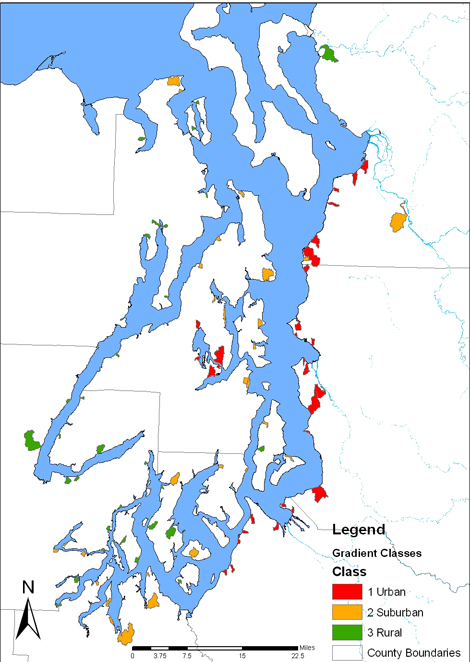Researcher: Daniele Spirandelli
Research Problem: Population growth and land use change are key drivers that alter coastal ecological conditions. Waste from urbanizing areas as well as people’s land use activities are leading contributors to water pollution impacting near-shore ecosystem function. Ecosystem services such as shellfish and beach recreation are increasingly at risk of contamination (Environmental Protection Agency 2002). As shorelines urbanize, wastewater infrastructure systems are designed to simultaneously support urban development and protect public health from harmful pollutants. However, pathogens, nutrients, and emerging contaminants remain a significant concern in the marine environments (Stewart et al. 2008; Mallin 2006; Environmental Protection Agency 2002). Evidence from studies suggests that sewer systems and onsite septics are both leading sources of contaminants in urbanizing coastal areas (National Research Council 1993; Weiskel and Howes 1996; Mallin et al. 1999; A. F. Holland 2004). What this research suggests is that the links between coastal water quality, wastewater infrastructure systems and patterns of urbanization are not fully understood. My research explores (1) patterns of urban development associated with different wastewater disposal types and (2) the relationship between indicators of near-shore water quality and alternative disposal types.
- How are patterns of alternative wastewater disposal types (sewers vs. onsite septics) distributed across a gradient of urbanization?
- What human and biophysical drivers influence the spatial distribution of these wastewater disposal types across this gradient?
- What patterns of development (land use & land cover) are associated with wastewater disposal types?
- What is the relationship between these alternative wastewater infrastructures and coastal water quality in shellfish growing areas?
Methods
- Stratified random sample of 90 sub-basins selected across an urban to rural gradient of seven counties in Puget Sound.
- Collected data on location and type of wastewater disposal types (septic, sewer) for each parcel.
- Created geodatabase of all parcel level data.
- Collected data on fecal coliform in shellfish growing areas and beaches.
Analysis
- Multivariate statistics for urban gradient analysis.
- Spatial analysis of development patterns including wastewater patterns, land use intensity, land cover configuration.
- Linear regression models to explore associations between wastewater, development patterns, and water quality.
Initial Findings
Parcel lot sizes
- Sewered parcel lot size averages 0.3 acres across urban, suburban, and rural basins, although there is considerable variation in lot size in urban and suburban parcels, but not in rural basins (Table 1).
- Average lot sizes of parcels on septics increases with the urban gradient.
- Lot sizes with septics smallest on average in urban basins (0.5 ± 2.8 acres) compared with suburban (1.37± 3.07 acres) and rural basins (2.8±5.3 acres).
Parcel septic density
- Mean density of parcels on septics is higher on average in suburban basins (35±40 parcels/mi2) compared to urban basins (10±22 parcels/mi2) and rural basins (7±8 parcels/mi2).
- A one-way ANOVA revealed parcel density differed significantly among gradient classes, F(2, 76) = 15.7, p=<0.001.
- Parcels in suburban sub-basins display a unimodal relationship between the density of septics and percent imperviousness suggesting suburban basins contain the highest density of septics as well as moderate to high imperviousness (>20%).
